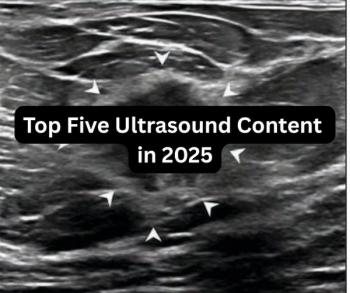
In vitro diagnostics: natural next choice for M&A
The obvious targets for merger and acquisition are gone. The flurry of purchases undertaken in 2000 pretty much cleared the deck of single-modality vendors. SMV is part of GE; ADAC Laboratories has become the nuclear medicine division of Philips; Agilent
The obvious targets for merger and acquisition are gone. The flurry of purchases undertaken in 2000 pretty much cleared the deck of single-modality vendors. SMV is part of GE; ADAC Laboratories has become the nuclear medicine division of Philips; Agilent is about to be tacked onto Philips. So what's left? Sure, x-ray and PACS/networking companies, but most of the ones with any market share have already been gobbled up.
Before the big guys start eyeing each other, I've got a suggestion. Three words: in vitro diagnostics (IVD).
This industry, which generates billions of dollars in annual revenue, is packed with current and future opportunities. The best part is that in vitro diagnostics are directly related to the core holdings of radiology companies. We call MR spectroscopy a "noninvasive biopsy." But what does it do? It records the spectra of chemicals inside the body to evaluate health and to spot disease.
Take SPECT and PET, which look at the function of body tissues. With these we can distinguish malignant tumors from benign, necrotic tissue from stunned. And what do we call it? Molecular imaging.
Enough said. Let's look at the bottom line. IVD spans a range of product types from clinical chemistry analyzers to hematology systems and immunoassays. A handful of big companies, including Abbott, Roche, and Beckman Coulter, hold about three-quarters of this market. The rest is split among small companies. A thousand or more of these entrepreneurial ventures are floating around, according to the FDA. Many are virtual firms, composed of a CEO, a regulatory wiz, and a patent.
The situation offers two distinct opportunities for hungry multimodality companies. Merge with one of the big IVD companies to establish a market position, then pick up a few small companies with technologies that complement imaging equipment. Or capture some small fry and pair their technologies with heavy iron to create a hybrid of imaging and IVD technologiesÑa one-stop shop for diagnosis. Examples would be combining an IVD test for lung cancer and multislice CT; bringing together a marker for myocardial infarction and cardiovascular MRI.
DNA chips represent an especially attractive possibility. This gene-based microtechnology is being groomed to detect a wide array of conditions, including Alzheimer's disease, cystic fibrosis, and some forms of cancer. An infusion of capital and a new owner might do wonders for the right one of these companiesÑand for a vendor that wants to maintain its tradition in diagnostics.
Newsletter
Stay at the forefront of radiology with the Diagnostic Imaging newsletter, delivering the latest news, clinical insights, and imaging advancements for today’s radiologists.




























